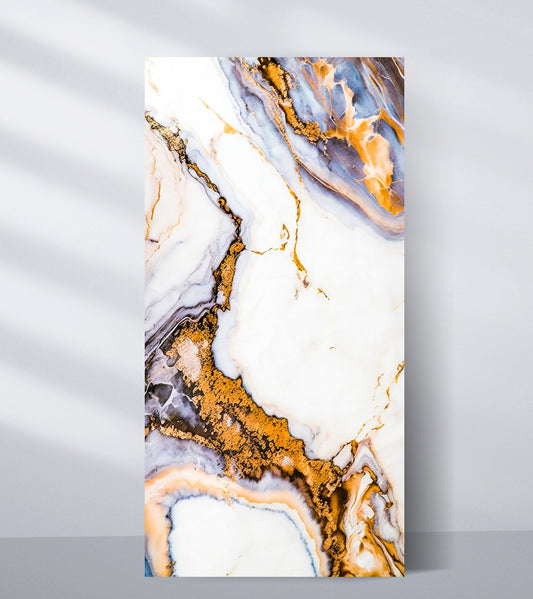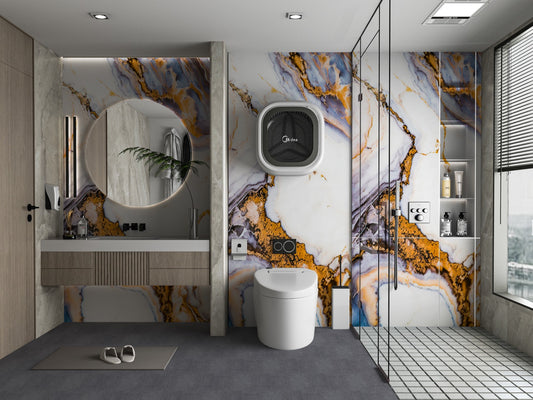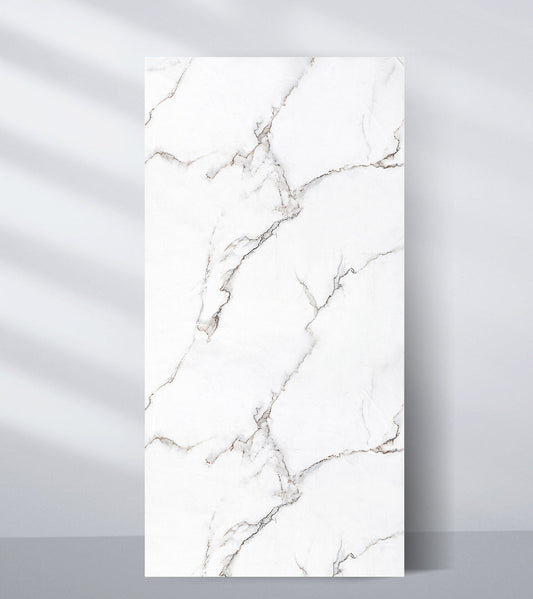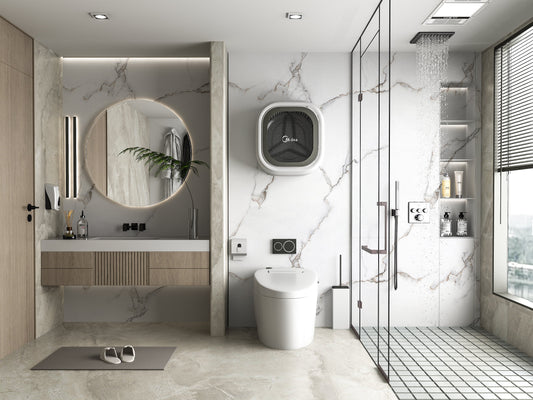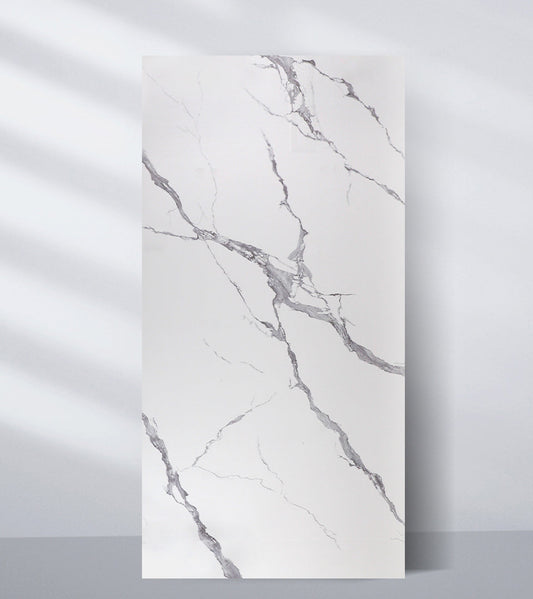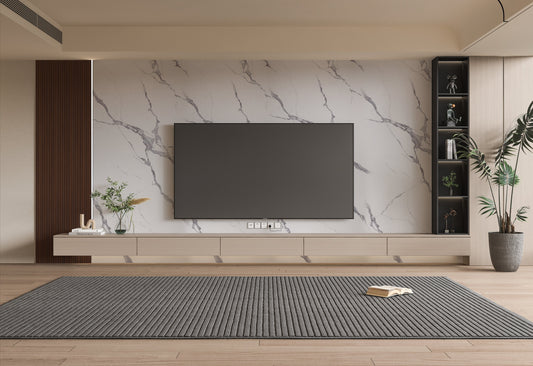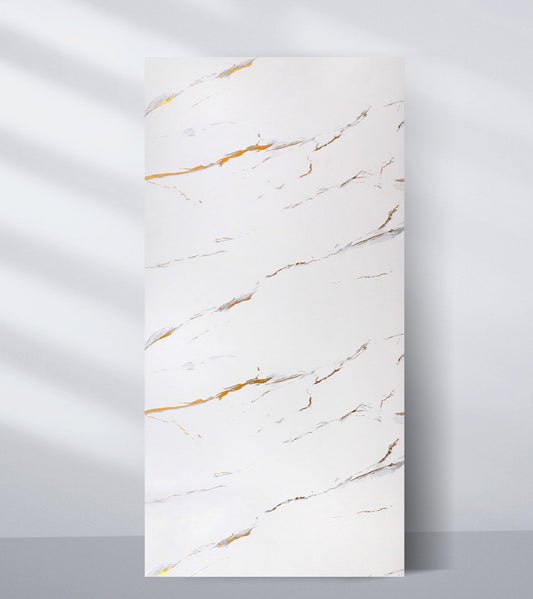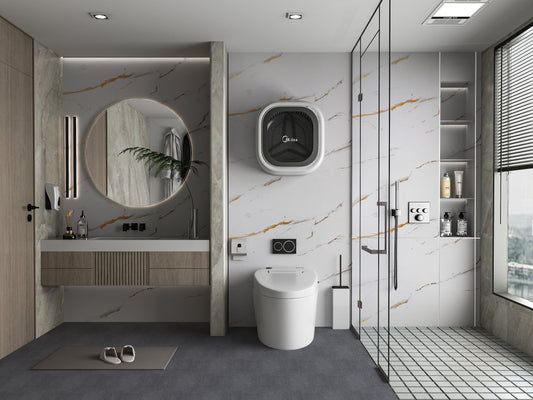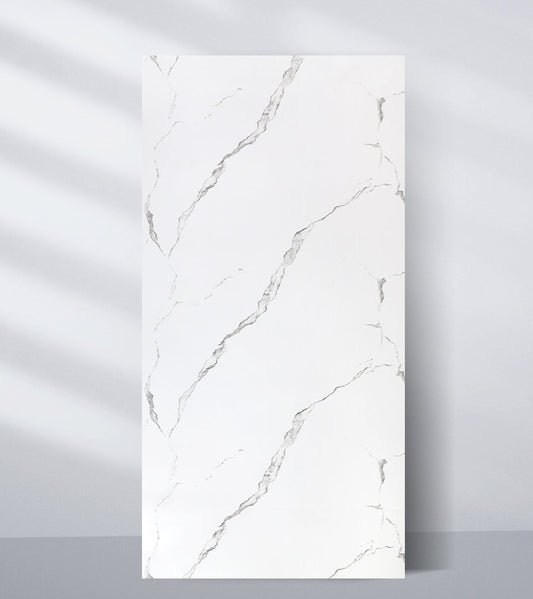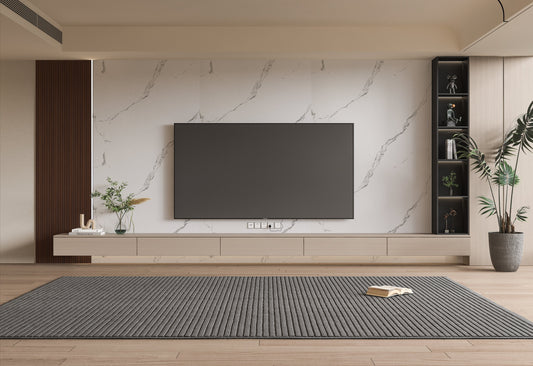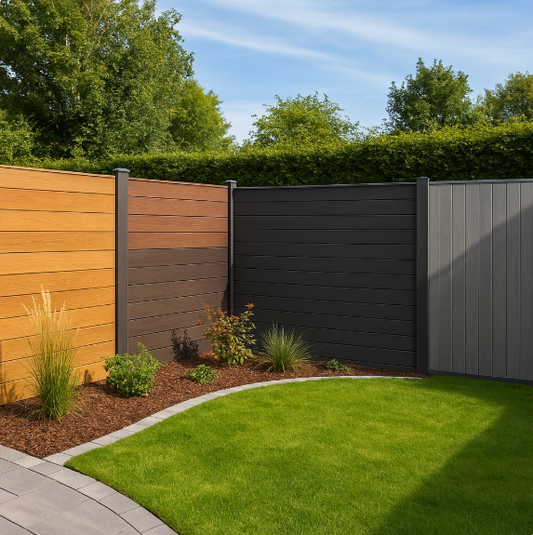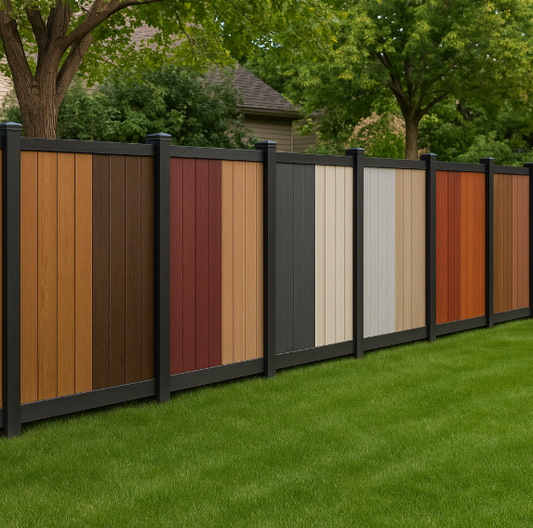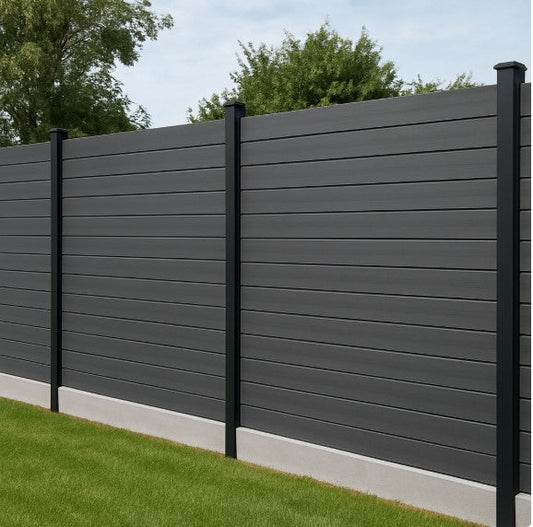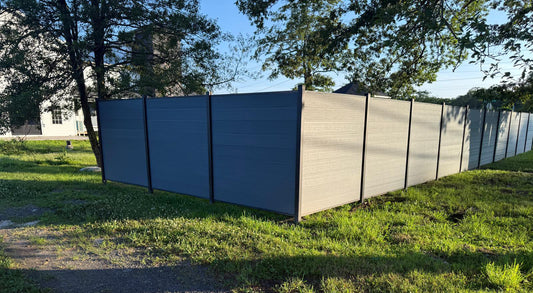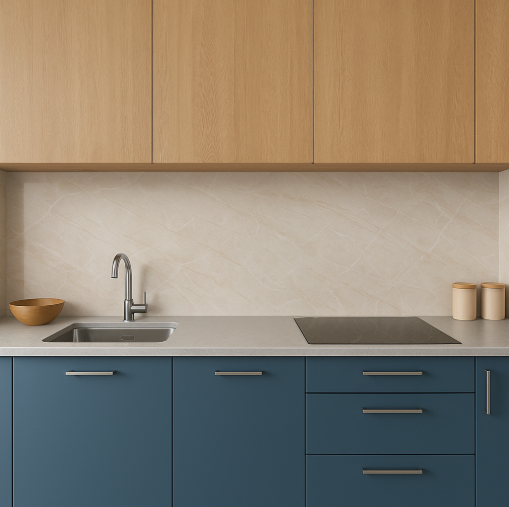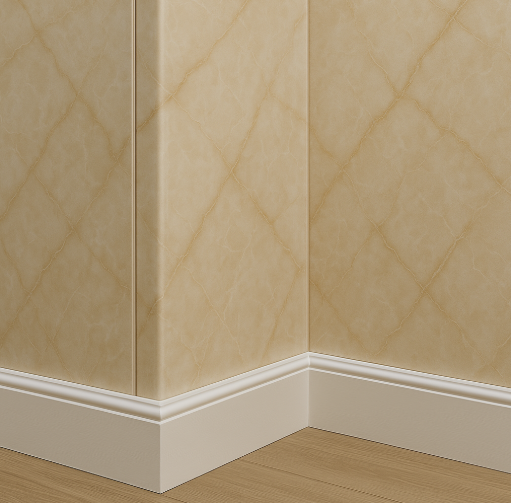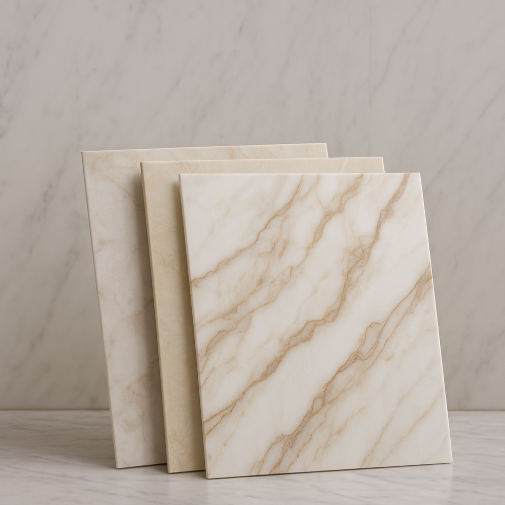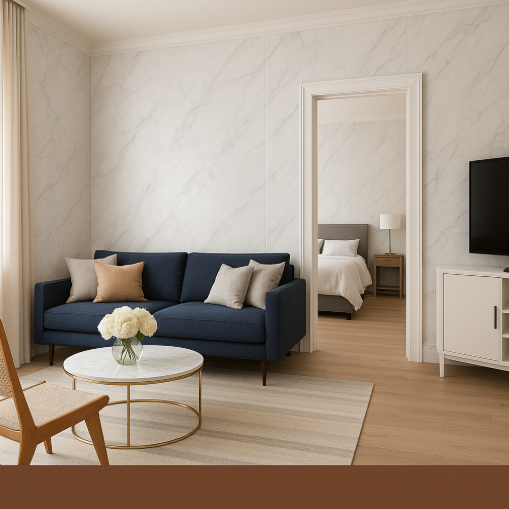Introduction to Composite Fence Co-Extrusion
|
|
Composite fence co-extrusion is an advanced manufacturing process where multiple materials are combined to create durable and aesthetically pleasing composite fencing panels. This method enhances the performance and appearance of fences by incorporating a protective outer layer around a composite core. Utilizing state-of-the-art co-extrusion technology ensures enhanced resistance to environmental factors while maintaining a high-quality finish that meets modern architectural trends.
The process typically involves bonding wood fibers, recycled plastics, and polymers under high heat and pressure. The materials are fused together in a single extrusion step, which guarantees a consistent structure and robust durability. An integral outer layer is co-extruded simultaneously, providing the fencing with superior protection against UV radiation, moisture, rot, and insect damage. This protective layer extends the lifespan of composite fencing, ensuring minimal maintenance and long-term value.
One of the significant advantages of co-extrusion is its uniformity in color and texture. The outer layer resists fading, stains, and scratches, resulting in a fence that retains its appearance even after years of exposure to harsh weather conditions. Additionally, the technology supports various design options, allowing consumers to choose from an array of finishes, textures, and colors that emulate natural wood grains or modern aesthetics.
Composite fence co-extrusion addresses many common issues associated with traditional wood fencing, such as warping, splintering, and rotting. By utilizing recycled materials, this process contributes to eco-friendly construction practices, aligning with growing sustainability initiatives. This combination of longevity, low maintenance requirements, and environmental benefits positions co-extruded composite fencing as a preferred choice for residential, commercial, and industrial applications worldwide.
Understanding the Co-Extrusion Technology
Co-extrusion technology represents a significant innovation in the manufacturing of composite fencing materials. This advanced process involves the simultaneous extrusion of multiple layers of materials to form a single composite product. By integrating different material properties into one structure, co-extrusion offers enhanced functionality, strength, and aesthetic appeal.
The technique relies on precision machinery to blend core and surface layers during production. Typically, the core of the composite material consists of recycled wood fibers and high-density polyethylene (HDPE), providing structural durability. The outer layer, or the protective cap, is made from a highly-engineered polymer that offers superior resistance to UV radiation, moisture, and stains. This dual-layer configuration ensures that composite fences achieve long-term resilience and minimal maintenance requirements.
One of the key attributes of co-extrusion technology is its ability to provide consistent surface finishes and color integrity. Through precise temperature and pressure control, manufacturers can create fences with uniform textures and colors that mimic the natural appearance of wood, all while avoiding issues like warping, cracking, or fading over time.
Another important aspect of co-extrusion is its environmental efficiency. By utilizing recycled materials in the core and minimizing waste during production, the process supports sustainable manufacturing practices. It also reduces reliance on non-renewable raw resources, making it an eco-friendly alternative to traditional fencing solutions.
The versatility of co-extrusion technology enables the creation of fencing products tailored to specific needs, including variations in size, color, and texture. This adaptability ensures that customers achieve high-quality, durable fencing solutions at competitive prices while also catering to aesthetic preferences. Therefore, co-extrusion technology represents a pivotal advancement in the composite fencing industry.
Benefits of Choosing Composite Fencing
Composite fencing offers a wide array of advantages, making it a preferred option for modern homeowners and property developers. Its unique blend of materials, combining wood fibers and plastic, results in a durable and low-maintenance fencing solution. By understanding its numerous benefits, individuals can make informed decisions when considering an upgrade or replacement for traditional fencing systems.
1. Durability and Longevity
Composite fencing is engineered to withstand harsh environmental conditions. Unlike wood, which is prone to warping, rotting, and insect damage, composite materials resist these issues, ensuring a longer lifespan. Its sturdy construction can endure extreme weather events while maintaining its structural integrity and visual appeal.
2. Low Maintenance
One of the most notable benefits of composite fencing is its minimal upkeep requirements. Unlike traditional wood fences that need regular painting, staining, or sealing to preserve their aesthetics and functionality, composite fences retain their appearance with just occasional cleaning. This contributes to long-term cost savings while reducing the time and effort spent on maintenance.
3. Aesthetic Appeal
Composite fencing replicates the natural look of wood but provides more consistency in texture and color. Available in various shades, finishes, and designs, these fences complement a wide range of architectural styles, enhancing the outdoor space’s overall aesthetic while maintaining their modern and polished appearance.
4. Eco-Friendliness
Manufactured from recycled materials, composite fences are an environmentally conscious choice. By reusing wood fibers and plastic waste, these fences reduce demand for virgin materials and minimize their carbon footprint, appealing to those prioritizing sustainable development.
5. Enhanced Privacy & Security
The dense construction of composite fencing provides significant privacy and security. With fewer gaps between panels and a strong framework, it acts as a robust barrier, ensuring that visibility and entry are restricted to a greater extent than with many other types of fencing.
By addressing the need for durability, aesthetics, sustainability, and convenience, composite fencing establishes itself as an innovative and practical solution for modern outdoor spaces.
Durability and Longevity of Co-Extruded Composite Fences
Co-extruded composite fences are engineered to provide remarkable durability, making them a highly sought-after choice for residential, commercial, and industrial applications. The manufacturing process integrates a robust core material with an outer protective layer, ensuring the fence withstands harsh conditions over extended periods. This advanced combination enhances structural integrity, allowing the fences to resist wear and tear that traditionally affects other fencing materials such as wood or metal.
One of the most significant advantages of co-extruded composite fences is their resistance to environmental factors. The outer layer is designed to be UV-resistant, maintaining color vibrancy and surface integrity even after prolonged exposure to sunlight. Unlike wooden fences, composite alternatives do not warp, rot, or splinter, as they are impervious to moisture damage. This superior resistance makes them an ideal solution in areas prone to extreme weather conditions, such as heavy rainfall, snow, or intense heat.
Termites and other pests, which are common issues with traditional wood fencing, pose no threat to co-extruded composite fences. Their material composition excludes organic elements that attract pests, ensuring long-term structural stability. Additionally, they are highly resistant to corrosion and rust, a common problem with metal fencing solutions. As a result, these fences retain their functional and aesthetic appeal for years with minimal maintenance.
Maintenance requirements for co-extruded composite fences are minimal, further reinforcing their longevity. Unlike wood, which requires staining, sealing, or painting, composite fences only need occasional cleaning with soap and water to retain their appearance. This reduced maintenance effort not only saves time but also lowers long-term costs for property owners.
The co-extruded design also ensures consistent quality throughout each fence panel. Because of the material’s uniform composition, there are no weak points or irregularities that could compromise stability or performance. This consistency guarantees extended use life, contributing to the product’s high cost-effectiveness and sustainability.
Design Versatility and Aesthetics of Composite Fencing
Composite fencing offers unparalleled design flexibility, making it a preferred choice for both residential and commercial applications. Its ability to mimic the look of natural materials while maintaining its modern allure has redefined outdoor boundaries. With a wide range of finishes, colors, and textures available, composite fences can seamlessly blend into various architectural themes, from traditional to contemporary.
The realistic woodgrain patterns and color options are meticulously engineered, giving homeowners the ability to achieve the elegance of natural timber without the drawbacks like warping or fading. Meanwhile, smooth, monochrome finishes offer modern aesthetics ideal for urban designs. This variety ensures compatibility with diverse landscaping styles and property exteriors.
Composite fencing panels are designed for modularity, enabling customization of shapes, heights, and layouts based on specific requirements. Whether crafting a tall privacy fence, a statement boundary, or a sleek horizontal slat fencing, the adaptability of composite fencing provides solutions for unique projects. These fences also integrate well with other materials such as masonry or metal for a hybrid, customized appearance.
The durability of these fences does not compromise their visual appeal. Composite materials resist fading, staining, and cracking, ensuring the fence maintains its beauty over time with minimal upkeep. Unlike wood, there is no need for painting or staining, which adds to their aesthetic longevity.
Furthermore, the eco-friendly design aligns with sustainable practices. Many composite fences are manufactured using recycled materials, making them a visually appealing, conscientious choice. This sustainable innovation exemplifies how aesthetics and functionality are balanced. The result is a fence that enhances curb appeal while meeting modern environmental standards.
Environmental Advantages of Composite Fence Materials
Composite fence materials offer notable environmental benefits, making them an ideal choice for sustainable construction. Unlike traditional wood fencing, which relies on deforestation, composite fences are typically made using a combination of recycled plastics and reclaimed wood fibers. By repurposing these materials, manufacturers help reduce landfill waste and minimize the demand for virgin resources.
Production of composite fencing generates a significantly lower carbon footprint compared to creating traditional wood or metal fencing. Advanced co-extrusion techniques ensure efficient use of raw materials, enhancing durability while minimizing production byproducts. Additionally, because composite fences resist warping, rotting, and insect infestations, they have a longer lifespan than conventional options. This durability reduces the frequency of replacements, cutting back on the resources required for recurring manufacturing and installation.
Composite fencing also eliminates the need for harmful chemical treatments. Wood fences typically require preservatives, stains, and sealants containing toxic chemicals, which can leach into the soil and water. In contrast, composite materials are inherently resistant to outdoor damage and do not demand these environmentally detrimental maintenance products—helping to preserve ecosystems and prevent soil contamination.
Another benefit is the recyclability of composite fencing at the end of its useful life. Certain manufacturers design their products to be recyclable, ensuring the materials can be repurposed or reused instead of simply discarded. This circular approach supports waste reduction and aligns with broader sustainability goals.
Incorporating composite fencing is a smart choice for environmentally conscious consumers, offering eco-friendly attributes without compromising on durability or aesthetic appeal. The material's sustainability reflects the growing emphasis on reducing the environmental impact of modern building practices.
How to Find the Best Wholesale Prices for Composite Fences
Securing the best wholesale prices for composite fences requires a strategic approach that involves thorough research and evaluation. Buyers should consider several factors that impact pricing and ensure they are making informed decisions.
Understand Market Trends
Researching current market trends is essential. Prices for composite fences often fluctuate based on raw material costs, demand spikes, and technological advancements in production processes such as co-extrusion. Staying informed about these trends enables buyers to time their purchases effectively and secure better deals from suppliers.
Compare Multiple Suppliers
Purchasers should reach out to multiple suppliers and distributors specializing in composite fencing. This provides an opportunity to compare pricing structures, available discounts, and shipping costs. Wholesale suppliers located closer to the buyer may reduce transportation expenses, offering additional savings.
Prioritize Direct Manufacturers
Buying directly from manufacturers often ensures lower costs as it eliminates intermediary markups. Many manufacturers also offer bulk pricing options for wholesale buyers, allowing a substantial reduction in per-unit costs.
Evaluate Quality vs. Cost
Low prices are appealing, but it is vital to assess the quality of composite fences being offered. Factors such as durability, UV resistance, maintenance requirements, and warranty coverage should be examined. Opting for subpar products to save money may lead to higher replacement costs in the long term.
Leverage Negotiation and Partnerships
Negotiation plays a crucial role in obtaining the best deals. Long-term partnerships with trusted suppliers often result in better terms, such as volume discounts and priority access to promotions. Businesses should proactively engage in discussions about pricing options tailored to their specific needs.
Monitor Online Wholesale Platforms
Online platforms dedicated to wholesale transactions provide an excellent avenue for comparing global suppliers. These platforms often have customer reviews and ratings to help evaluate supplier credibility. Buyers should use these insights to validate competitive pricing without compromising on quality.
Key Factors to Consider When Purchasing Composite Fences
When evaluating composite fences for purchase, several critical factors should guide decision-making to ensure the best investment. Buyers should carefully assess material quality, durability, design options, environmental impact, and associated costs to select a product that meets both aesthetic and functional requirements.
1. Material Composition and Quality
Composite fences are typically made from a mix of wood fibers and plastic materials. Opting for fences made with high-density polyethylene or virgin plastic combined with recycled wood ensures better structural integrity. Poor-quality composites may result in fading, cracking, or warping over time. Ensuring UV-resistance and moisture resistance in the material can also extend the lifespan of the fence.
2. Durability and Weather Resistance
The longevity of a composite fence depends on its ability to endure harsh weather conditions. Buyers should prioritize weather-resistant options that can withstand rain, snow, and intense sun exposure. Scratching or dent resistance is also vital, especially for high-traffic areas or homes with pets.
3. Aesthetic Design and Versatility
Composite fences are available in a variety of colors, patterns, and finishes, including options that mimic the look of wood or stone. It is important to evaluate whether the fence complements the surrounding landscape or architectural style of the property. Ease of customizability, such as panel height and shape, should also factor into the decision.
4. Eco-Friendliness
Many composite panels are crafted from recycled materials, making them an environmentally sustainable choice. Buyers seeking environmentally conscious products should verify the proportion and source of the recycled content. Certifications from industry bodies, such as LEED, can provide transparency.
5. Maintenance Requirements
Low maintenance is a prime benefit of composite fences. Ensure the fencing material requires minimal upkeep, such as occasional cleaning with soap and water, without the need for repainting or staining. This feature reduces ongoing costs and time commitment.
6. Cost and Warranty
While composite fences may have a higher upfront cost than traditional materials, their long-term value lies in durability and reduced maintenance expenses. Buyers should compare wholesale prices and confirm the inclusion of warranties, covering aspects like color fading, structural damage, or manufacturing defects.
By carefully weighing these factors, buyers can confidently choose a composite fence tailored to their property needs.
Comparing Composite Fences to Traditional Fencing Options
When evaluating fencing materials, composite fences present a modern alternative to traditional options such as wood, vinyl, and metal. One of the primary distinctions between composite fences and traditional wooden fences lies in durability. While wood is prone to rotting, warping, and insect damage, composite fencing offers resistance to these issues due to its blend of wood fibers and plastic polymers. This engineered composition ensures that composite fences retain their structural integrity over time with minimal maintenance.
Aesthetically, composite fencing mimics the natural look of wood but with the added advantage of color retention. Unlike wood, which requires frequent staining or painting to preserve its appearance, composite materials are manufactured with UV-resistant coatings, preventing fading even in prolonged sunlight exposure. In comparison to vinyl fencing, which can appear artificial, composite fences provide a more authentic wood-like texture.
In terms of strength, composite fences outperform vinyl and wood in many cases. Wood fencing can weaken over time due to weathering, and vinyl fences may suffer cracking or brittleness in extreme temperatures. Composite fencing is engineered to withstand varied climate conditions, including heavy rain, freezing temperatures, and high heat, making it a versatile choice across regions.
From a cost perspective, composite fencing involves a higher initial investment compared to traditional wood but offers long-term savings. The reduced need for repairs, repainting, or early replacement compensates for the upfront cost over time. Additionally, composite fences outperform metal options like chain link in terms of privacy and noise insulation, thus catering to those seeking a more serene outdoor environment.
Sustainability is another critical factor for environmentally conscious buyers. Unlike wood, which often involves deforestation, composite fencing is frequently manufactured using recycled materials. This makes it a greener alternative to traditional wooden fences, aligning with modern sustainability goals.
Maintaining Co-Extruded Composite Fences for Long-Term Quality
Co-extruded composite fences are known for their durability and resilience, but consistent maintenance ensures they retain their aesthetic appeal and structural integrity over time. Proper care not only enhances their lifespan but also protects the investment made in these high-quality fencing materials.
To maintain co-extruded composite fences effectively, regular cleaning is essential. Dust, dirt, and debris can accumulate on the surface and dull its appearance. Using a mild soap solution with warm water and a soft brush helps remove buildup without damaging the surface. Rinsing thoroughly with clean water ensures no residue is left behind, which may create streaks or discoloration.
Periodic inspections should be conducted to identify any signs of wear or damage. Factors such as harsh weather conditions, exposure to strong UV rays, or high humidity levels can gradually affect the fence's surface. Cracks, chips, or loose boards should be addressed promptly to prevent further deterioration. Manufacturers often recommend using a matching composite repair kit for seamless fixes.
For areas where mildew or mold is common, an anti-mold cleaner specifically designed for composite materials is advisable. While co-extruded fences are resistant to moisture, preventive steps reduce the risk of organic growth. Ensuring proper drainage around the base of the fence and trimming vegetation away from its surface aids in reducing moisture retention.
Routine lubrication of any hardware, such as gate hinges or sliding mechanisms, ensures smooth operation. Protecting hardware parts from rust or corrosion maintains the overall functionality of the fence.
Avoid using abrasive tools, high-pressure washers, or harsh chemical cleaners, as they may compromise the integrity of the co-extruded surface. Finally, consulting the manufacturer’s care guide ensures adherence to specific recommendations for the product model, optimizing its performance for years to come.
Customer Testimonials: Real Experiences with Composite Fences
Composite fences have earned widespread acclaim for their durability, aesthetics, and low maintenance. Feedback from homeowners, builders, and landscapers highlights the tangible advantages of using composite fencing over traditional materials. Real-world testimonials provide valuable insights into the performance of these fences in diverse settings.
Real Feedback from Homeowners
Many homeowners appreciate how composite fences seamlessly balance style and functionality:
- One homeowner from California shared, "It’s been over three years since we installed our composite fence, and it still looks as beautiful as the day it was installed—not a single sign of fading or wear."
- Another customer from Texas emphasized its weather resistance, stating, "Our composite fence stood strong during storms that damaged our wood decking. It's one of the smartest investments we've made for our property."
Opinions from Builders and Contractors
Builders often cite ease of installation and customer satisfaction as reasons they recommend composite fencing:
- A contractor from Oregon mentioned, "The lightweight design of composite fence panels made installation quick and hassle-free. Plus, my clients love the look and feel of the finished project."
- Another noted, "As a professional, I’ve recommended composite fences for years because they require minimal maintenance. My clients consistently praise them for their long-term value."
Landscaping Experts on Versatility
Landscapers have also recognized the versatility of composite fences:
- A Massachusetts-based landscaper highlighted, "The variety of colors and textures allowed us to customize fencing that perfectly complemented the surrounding garden. It elevated the entire outdoor space."
Key Themes in Testimonials
From enhanced curb appeal to unmatched longevity, common themes among testimonials include:
- Low Maintenance: Customers value the reduced upkeep compared to wood or metal fences.
- Weather Resilience: Severe weather has tested composite fencing, proving its strength and durability.
- Aesthetic Excellence: Decorative and natural appeal remain major selling points.
These testimonials underscore why composite fences continue to be a preferred solution for residential and professional projects.
Conclusion: Quality and Affordability with Composite Fence Co-Extrusion
Composite fence co-extrusion offers a balanced combination of durability, aesthetics, and value. This advanced manufacturing process enhances the performance of fence panels by utilizing a protective outer layer that ensures resistance against common environmental challenges, including moisture, UV exposure, and temperature fluctuations. This shielding layer preserves structural integrity, substantially reducing maintenance requirements and extending the lifespan of the fencing system.
When considering quality, composite fence co-extrusion stands out due to its innovative design and uniform construction. The co-extrusion technology enables the use of multi-layered materials that maintain their look and function over time without warping, cracking, or fading. This process not only improves durability but also provides a smooth and refined finish that enhances curb appeal, making these fences suitable for both residential and commercial applications.
Affordability is equally a defining feature of composite fence co-extrusion. By optimizing material usage and ensuring production efficiency, manufacturers can produce high-quality fence panels at competitive prices. Wholesale buyers particularly benefit from scalable production processes, which result in significant cost savings without compromising core attributes such as strength and visual appeal.
Key advantages of co-extruded composite fences include:
- Longevity: With superior resistance to wear and tear, these fences require minimal upkeep.
- Design Versatility: Available in various colors, textures, and styles to complement diverse property aesthetics.
- Eco-Friendliness: Many products use recycled materials, contributing to sustainable practices.
By blending cutting-edge technology with cost-effective solutions, composite fence co-extrusion meets the needs of modern consumers seeking long-lasting fencing options. It bridges the gap between premium performance and affordability, offering substantial value across markets.

